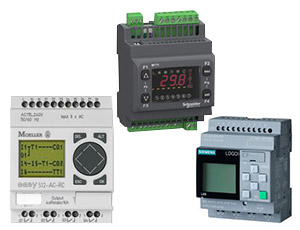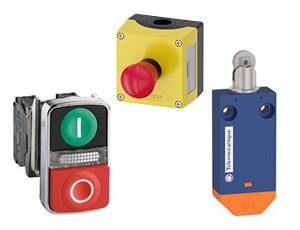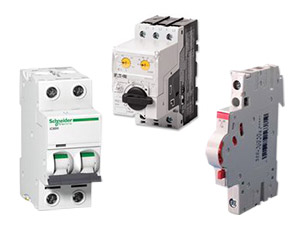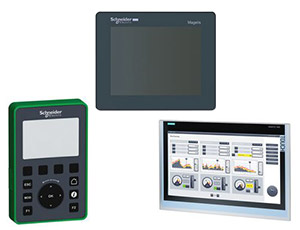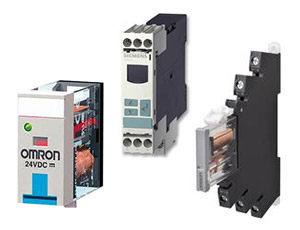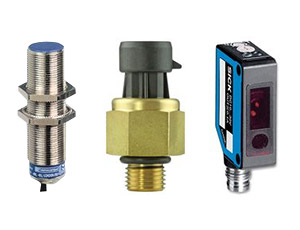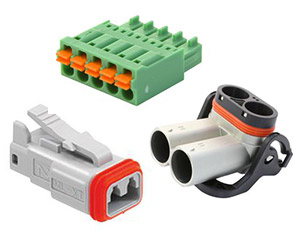Industry 4.0 Solutions for Smart Factory Control Systems
The last few decades witnessed the emergence of a fourth industrial revolution, known as Industry 4.0. This revolution, with the assistance of interconnectivity via the Internet of Things (IoT), the foundation of cyber-physical systems, and real-time data access, transformed digital technology to a whole new level.
Industry 4.0 provides an interlinked, comprehensive, and holistic outlook to manufacturing. It links physical with digital and permits better access and collaboration spanning departments, people, partners, vendors, and products. Industry 4.0 helps business owners to understand every operational aspect and allows the management to take advantage of instant data to boost productivity, drive growth, and improve processes.
Smart Factory Architecture
Smart factory is the product of three principal developments: integration via digitalization, use of strategies (scenarios) and flexible structures, and use of artificial intelligence (AI) methods (aka smart solution). Resources, system control, and materials can be connected to create intelligent networks along the contiguous value chain, leading to better real-time and mutual autonomous control decisions.
Smart factory architecture, as depicted in Fig. 1, includes four layers, namely the physical resource layer, network layer, the cloud application layer and terminal layer. Key technologies involving all four layers must be considered in detail to convert a modern factory into a smart one.
To browse for products, click on the parts highligted in green on the below diagram
Figure 1: Architecture of smart factory
Physical Resources Layer
This layer encompasses every resource necessary for the entire manufacturing lifecycle and represents the foundation for the establishment of intelligent manufacturing. The efficient manufacture of customized products pushes new demands on manufacturing equipment, data acquisition, and production lines. Thus, to satisfy smart factory requirements, present-day key technology problems must be solved.
A. Reconfigurable Manufacturing Unit
This modularized manufacturing unit (with modularization enabled by industrial robot, machining center, and mechanical arm), improves dynamic scheduling. The reconfigurable controller offers a manufacturing equipment functions extension.
Configurable Controller
Configurability of any control system refers to integrating, reusing, extending, and replacing hardware or software system components. The correct controller improves manufacturing unit configurability, which expands the unit's purpose in multi-application schemes. The manufacturing unit thus adapts quickly to operational environment changes. Configurable controller research is mainly confined to its function and structure.
Modular Manufacturing Units
These modular manufacturing components can work solo and manage varying smart factory schedules. Therefore, it is vital to upgrade the intelligence of robot units.
B. Intelligent Data Acquisition
The smart factory uses wireless sensor networks (WSNs) for data monitoring, logging, and acquisition. The data analysis-based manufacturing execution structure uses intelligent equipment for the proper execution of production schedules. Popular wireless sensor networks include Bluetooth, Radio Frequency Identification (RFID) , and ZigBee. Near-Field Communication (NFC) can also be used as a gateway to manufacturing resources. Both Bluetooth and ZigBee satisfied the needs for wireless communication technologies' industrial automation costs (low energy consumption and low price). The PAN1780 is a Bluetooth 5 Low Energy (LE) module based on the Nordic nRF52840 single chip controller. The Bluetooth 5 features additionally a higher bit rate of 2 Mbps using the high-speed LE 2M PHY or a significantly longer range using the LE coded PHY at 500 kb/s or 125 kb/s. The new channel selection algorithm (CSA#2) improves the performance in high interference environments.
Multiple special sensors collect data in the manufacturing area, The data gathered from the sensors are of varying quality and different kinds. Therefore, the communication interface of intelligent equipment should be compatible with a series of communication protocols. For instance, it should be compatible with OPC, Open Database Connectivity (ODBC), RS232, Dynamic data exchange (DDE), and others which are used to connect control systems such as Supervisory Control and Data Acquisition (SCADA), Distributed Control System (DCS), and Process Control System (PCS). Besides, data acquisition devices should be easily set up, and their interfaces should be flexible and scalable. The manufacturing resources should support a fine-grained data acquisition in-process visibility system. Such a granular approach helps analytics and solves multiple complex issues like tagging and data acquisition. It also finds use in machine learning (ML) for recognition and identification.
Network Layer
Industrial networks integrate multiple network technologies like sensor networks and the field bus. The network layer, distinguished by control and perception, plays an important role in the smart factory. Data transmission requires improvements in cloud computing technology, reliable and real-time network techniques, manufacturing cloud platform, and information sharing among intelligent equipment. Advanced information technologies (example: field bus and IWSNs) and related machineries offer a method to meet the mentioned requirements. Field buses (like Foundation Fieldbus , Hart, and Profibus) meet open, compatible, and universal network enterprise needs. Most are already standardized. Technologies necessary in smart factories such as IWSNs will now be discussed.
OPC UA-Based Interaction in Multi-Agent Systems
OPC Unified Architecture (OPC UA) represents an industrial automation machine to machine (M2M) communication protocol. It is an OPC Foundation creation. The Machine-to-Machine (M2M) PICtail Daughter Board (AC320011) based upon u-blox GPS and GSM/GPRS modules, makes it easy to create low-cost M2M applications with location-awareness capabilities. The daughter board can be interfaced with Multimedia Expansion Board (DM320005) and a PIC32 starter kit (DM320003-2) to provide developers with a turn-key platform to get started with apps such as texting, email and GPS.
An intelligent manufacturing system is essentially a multi-agent system. It is comprised of task-driven intelligent equipment, with the agent identified by autonomy, decentralization, and heterogeneity. The multi-agent system is a coordinated solving system of complicated large-scale problems. Every agent cooperates to solve the puzzle. The OPC UA, besides data transmission, is used to consolidate production data with manufacturing and every agent has access to semantic annotation. Semantic units (think of it as a bridge) knowledge (real-world concepts) and linguistic input. A semantic information collection makes a useful resource to extract knowledge from the real world. This information pool is a semi-structured database that offers in-depth information concerning human knowledge, concepts, and the relations between them. Semantic annotation describes the procedure of tagging documents with applicable concepts. These documents are saturated with metadata having references that connect content to concepts, as elaborated in a knowledge graph. Unstructured content is thus easier to find and interpret. Such content can also be reused. The OPC UA-based interaction in multi-agent systems makes all agents mutually coordinate to solve problems in parallel, thus effectively enhancing problem-solving efficiency. Redundancy compels OPC UA to be of high importance and is featured with automatic correction, adjustable overdue settings, and error detection. The communication tools per OPC UA standard easily manage communication errors.
Software-Defined Industrial Networks
Network technology integrates a smart factory's external and internal resources to form a high covering, comprehensive, and unified manufacturing resource. It is thus crucial to accomplish adaptive transmission and network scalability. Researchers prefer a flexible network configuration. The SDNs simplify all hardware with centralized control. This is achieved by software, which expedites network management and meets dynamic network needs for intelligent manufacturing. With IIoT advances, the network inevitably becomes overloaded. This is due to a huge number of connections among heterogeneous equipment.
Device to Device Communication
The inconsistencies within a smart factory between limited bandwidth and quick growth of industrial networks' intelligent equipment become increasingly prominent. ‘D2D communication’ is where communication-controlled devices directly exchange information with their neighbours. Intelligent equipment in standard cellular networks directly communicate using D2D communication technology for direct links via an isotropic antenna at every base station. This technology offers a new path for large data transmission, low-latency data exchange, and massive access to a mobile terminal. In contrast, 5G communication technology imports new opportunities to fully automated wireless communication technology.
Edge Computing
Edge computing indicates an open platform with multiple features like networking, applications, computing, and storage. Edge computing is executed at a data source or network edge near to the device. Edge computing offers intelligent services that satisfy crucial intelligent manufacturing needs for agile connection, privacy protection, real-time processing, and data cleaning.
The SmartEdge Agile device is a certified hardware solution, embedded with a full software stack featuring Edge Intelligence. The solution runs at three levels; Device, Gateway, and Cloud.
- Sensor Device – autonomous non IP low powered device with BLE interface providing access to sensors and edge data processing
- Gateway – Android, iOS, Raspberry PI or other IP device which provide cloud access to sensor devices
- Cloud – complex of AWS, MS Azure and custom backend and frontend solutions to access sensor data and manage sensor devices and gateways
Data Application Layer
Management issues and application services are administered in this layer. The data application layer offers easy access and relevant security to multiple data storage services. All industry standardized protocols are applied for data and system end-user protection and privacy. It is to be ensured that all running applications are malware-free and provide consumers accurate information. Moreover, data consumers enjoy complete access to real-time data collected by factory devices. This application layer offers a platform to distillate helpful patterns from large amounts of industrial data and change it into knowledge that can be used for future improvement, novel business opportunities, proper functioning, early and better decision making. Industrial data generated information is delivered as an assortment of services to end-users like Product Lifecycle Management (PLM), Supply Chain Management (SCM), Quality Management System, (QMS)Enterprise Resource Planning (ERP), Manufacturing Execution System (MES), and Warehouse Management System (WMS). Several ML and deep learning (DL) methods like Artificial Neural Network, Recurrent Neural Network, Random Forest, Support Vector Machine, Auto Encoder, Logistic Regression, Convolutional Neural Network, and Restricted Boltzmann Machine can be applied to industrial data for numerous real-time and IIoT applications. Moreover, the DL models received superlative results in multiple natural language processing applications like text recognition, games, and image recognition. DL, with automatic feature extraction and high-volume modeling abilities, offers an innovative intelligent manufacturing analytics tool, especially for the big data era.
Big Data Applications in Manufacturing
Real-time sensor data, manufacturing process data, and machine logs form the bulk of Smart Factory Big Data. The manufacturing process data have many sources, spare value, and large volume. Industrial supply chain optimization fosters Big Data applications, fertilized by analysis, active maintenance, and product quality control in the intelligent manufacturing context.

